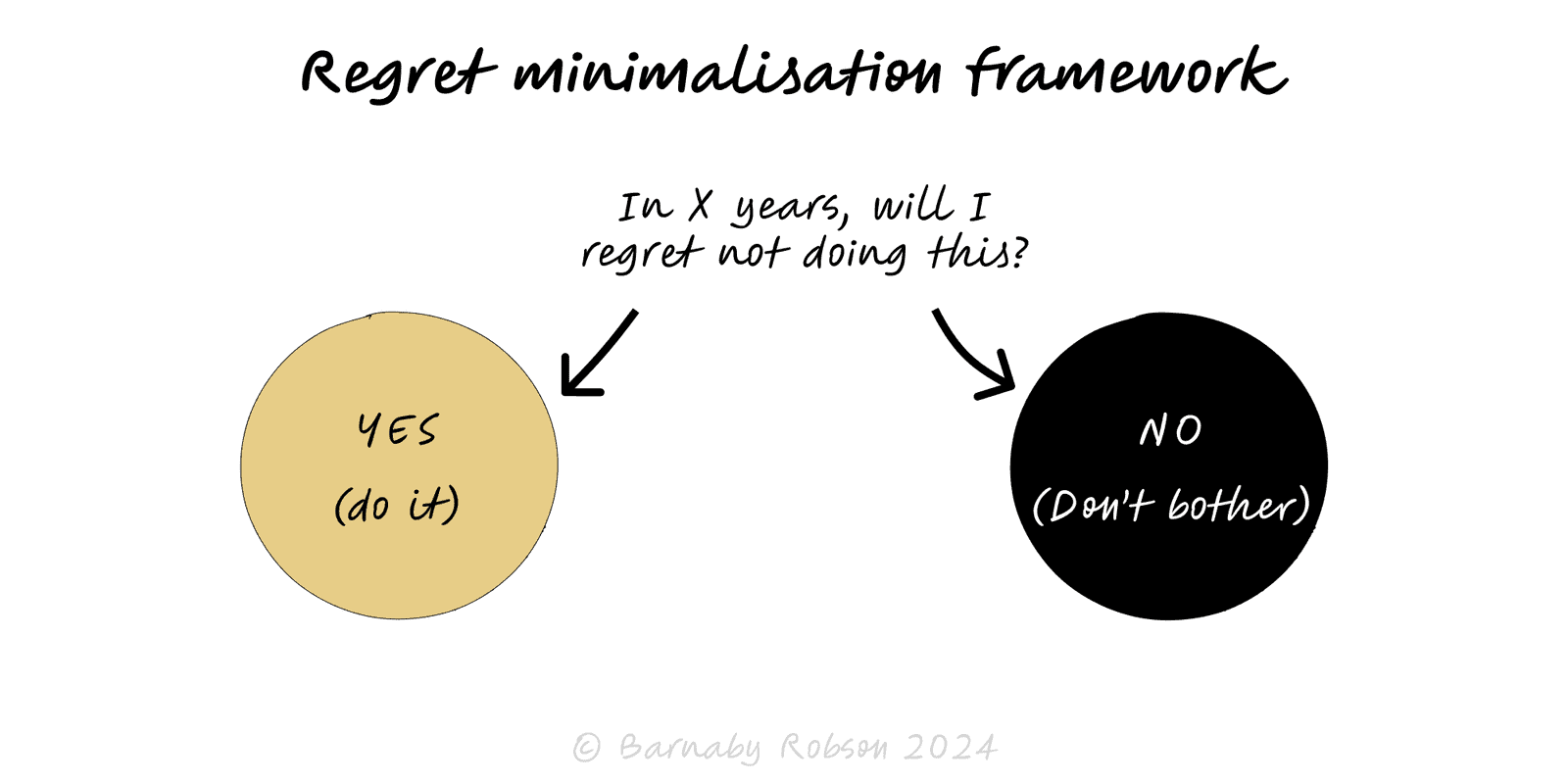Regret Minimalisation Framework
Popularised by Jeff Bezos

Jeff Bezos described using this frame in 1994 to decide whether to start Amazon: imagine yourself at 80, look back, and pick the path with the fewest deep regrets.
The model is a decision heuristic for high-uncertainty, identity-relevant choices.
Time horizon – pick the age or point-in-time you will judge from (e.g. 80 years old, 10 years out).
Regret types – omissions (things not tried) often sting longer than commissions (tries that failed).
Reversibility – two-way doors invite action; one-way doors raise the evidence bar and risk controls.
Asymmetric bets – prioritise options with capped downside and large upside to minimise future regret.
Identity alignment – choose paths consistent with values you want your future self to endorse.
Career moves – role changes, founding a venture, relocating.
Product bets – greenlighting an experiment or entering a niche.
Investing – sizing into a thesis where upside is power-law, downside bounded.
Negotiations – deciding when to walk or accept terms based on future-self view.
Personal commitments – education, partnerships, long projects.
Set the horizon – “When I’m [age/date], what will I wish I had done?”
List options with a one-line upside, downside, and probability sketch.
Mark reversibility – two-way or one-way door; add risk caps for one-way doors.
Write the future note – a 5–7 line letter from your future self about likely regrets for each option.
Choose the least-regret path; act now on the first reversible step and calendar a review.
Fantasy future self – idealised horizons that ignore current constraints and base rates.
Action bias – doing for its own sake; still reject bad EV moves even if “bold”.
Status quo disguise – using the frame to rationalise inaction; compare regrets of not trying.
One-way door blindness – underestimating irreversibility; add guardrails before leaping.
Value drift – revisit as values or circumstances change; the horizon can move.